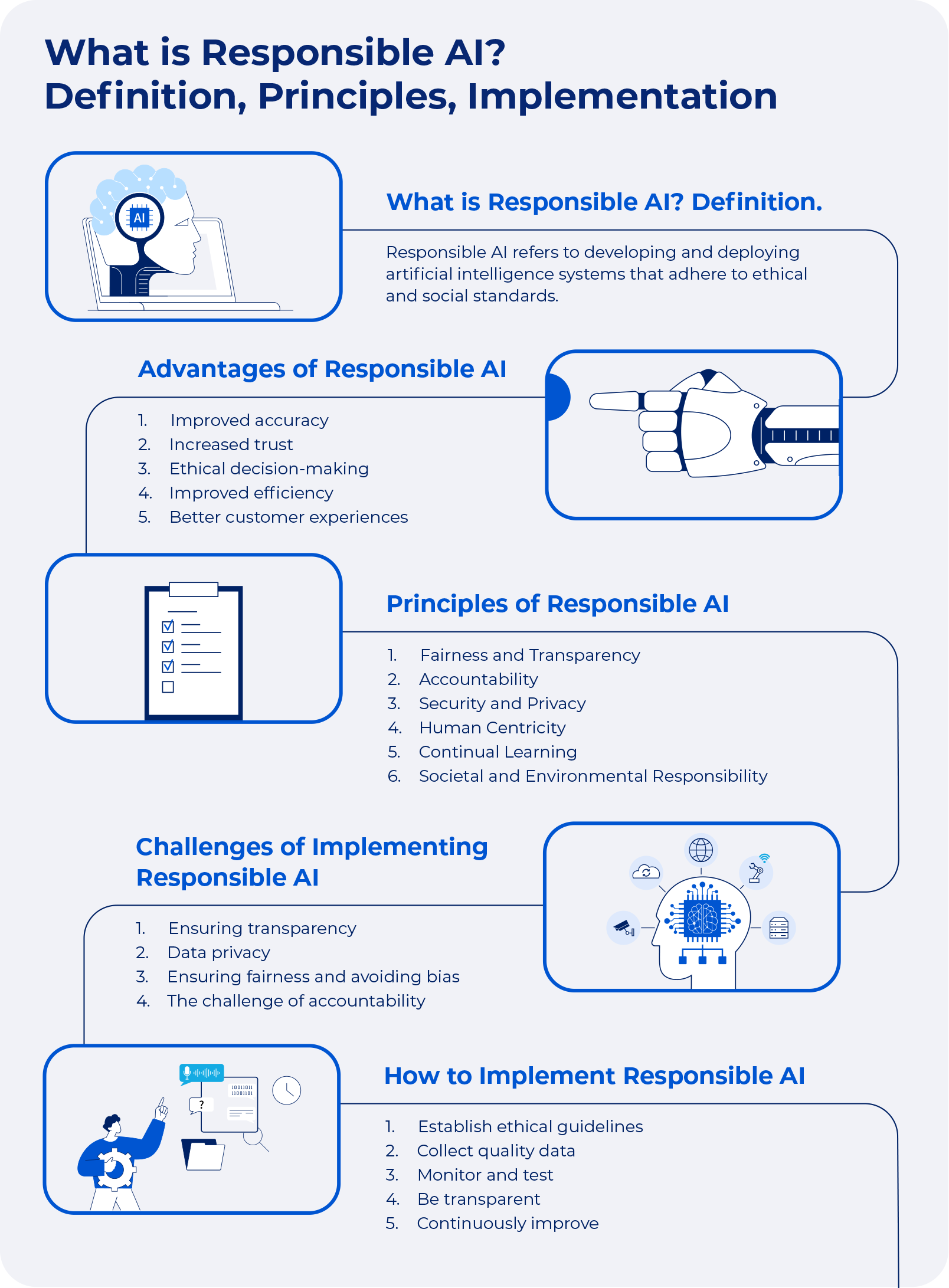It has become a given that AI can transform business operations. AI technologies offer great possibilities for boosting productivity and driving innovation, automating repetitive tasks, and uncovering hidden patterns in vast datasets. Yet, like any groundbreaking technology, AI comes with its own set of limitations that underscore the importance of managing expectations and integrating it thoughtfully.

In this article, we examine the intricacies of AI’s limitations in business. We look at key areas of concern, including creativity shortcomings, algorithmic biases, and ethical considerations. By truly understanding these drawbacks, business leaders can make more informed decisions about AI adoption so they can harness its power and mitigate potential risks.
1. Insufficient creativity
AI systems are proficient at analyzing patterns and replicating learned behaviors. However, they often struggle when tasked with creating original thoughts or interpreting emotional nuance
While AI is exceptional at pattern recognition and data-driven decision-making, it still falls short in areas requiring true creativity, emotional intelligence, and original thinking. This limitation has significant implications for businesses relying on innovation and human-centric problem-solving.
Creativity stems from imagination, intuition, and cultural context—qualities AI cannot replicate well enough. Similarly, AI lacks emotional understanding, making it unsuitable for roles that require empathy, such as mental health support or conflict resolution. For example, while AI can generate art or music, it cannot add meaning that resonates on a deeply human level.
Rather than viewing AI as a replacement for human creativity, businesses can leverage it as a powerful tool to enhance creative processes:
- Using AI for rapid prototyping and iteration in design processes
- Employing generative AI models to inspire new ideas and directions
- Utilizing AI-powered analytics to identify trends and opportunities for innovation

Source: infografolio.com
2. Bias and prejudices
While AI systems are expected to make unbiased decisions, the reality is far more nuanced. Algorithmic bias remains a significant concern that can have important implications for businesses and society.
For example, HR systems may discriminate against certain groups in hiring. Financial models can unfairly deny loans to qualified applicants. Healthcare AI may misdiagnose conditions in underrepresented populations. These issues highlight the need for fairness in AI design.
Tackling algorithmic bias requires a comprehensive approach. First, AI systems should undergo regular audits to detect potential biases. Second, companies must involve diverse teams in AI development and testing. Third, the team responsible for developing the AI system should incorporate fairness constraints during the model design phase.
These teams must also continuously monitor and adjust AI systems to ensure they remain fair in production environments. A great tool in their arsenal is explainable AI (XAI). XAI helps combat algorithmic bias by enhancing the transparency and interpretability of AI decision-making processes. It allows businesses to identify biases within AI systems. It also promotes fairness and accountability in AI applications and makes the reasoning behind decisions clearer. It also makes it easier to pinpoint issues and correct them.

3. High-cost implementation
Companies need to invest substantial resources to develop, train, and maintain AI models, which makes deploying AI systems costly. The cost of implementing a fully integrated AI solution can vary widely depending on the project’s scope. Initial investments can range from tens of thousands to several millions. These costs can be overwhelming. Moreover, the financial inaccessibility of such systems impacts smaller businesses and institutions, often creating a technological divide.
Therefore, every organization must assess the potential benefits against the costs. The decision of whether the investment is worth it is unique to every context. In most cases, it is: AI can streamline workflows and significantly increase efficiency. In addition, training AI models, especially large ones like GPT, requires significant computational resources. This high energy consumption contributes to environmental issues, as data centers produce considerable carbon emissions.
Businesses can adopt different strategies to address common cost challenges. For example, a phased approach to AI implementation allows for pilot projects before a broader deployment. Leveraging cloud-based AI services can also reduce infrastructure costs, making scalability more feasible. Additionally, partnering with AI vendors and consultants provides access to specialized expertise, which can also reduce unnecessary AI-related spending.
4. The black box dilemma
A major limitation of advanced AI systems, particularly those based on deep learning, is their opaque decision-making. This is often referred to as the “black box” of AI models. These systems grow more sophisticated each day, and their internal workings become increasingly difficult for humans to interpret.
Understanding the logic behind a specific decision or prediction is important. This lack of transparency can undermine trust, complicate accountability, and pose significant challenges for regulatory compliance. It can make it difficult to identify and correct errors or biases and potentially reduce stakeholder trust in AI-powered processes. Additionally, it complicates efforts to meet regulatory requirements.
To combat these limitations, organizations can take certain measures to increase AI transparency. Investing in explainable AI technologies can provide valuable insights into model reasoning, while techniques such as LIME (Local Interpretable Model-Agnostic Explanations) and SHAP (SHapley Additive exPlanations) can help interpret complex models. Developing hybrid systems that integrate transparent, rule-based approaches with advanced machine learning models offers another potential solution. Equally important is fostering a culture of AI literacy within the company empowering stakeholders to better understand AI outputs.
5. The ethical and moral quandary
The extensive data needed to train AI models presents substantial privacy and ethical challenges that businesses must tackle. Organizations face critical questions about data collection and usage, ensuring robust data security to prevent unauthorized access, and balancing personalization with individual privacy rights. Lastly, they must be prepared to address issues related to data monitoring and exploitation.
Another major consideration is algorithmic fairness and AI’s broader social impact. Poorly designed AI systems risk reinforcing existing social disparities. Businesses must evaluate how AI-driven decisions affect marginalized communities and anticipate unintended consequences of automated decision-making. They must also ensure fair access to AI-powered services and opportunities and combat the spread of misinformation.
To navigate these challenges, companies can build diverse, cross-functional teams and conduct regular social impact assessments. These efforts are crucial for identifying ethical risks, fostering fairness, and ensuring that AI technologies are developed and deployed responsibly.
6. Accountability and liability
Accountability in AI is essential. It influences customer trust, brand image, legal responsibilities, and ethical standards. A lack of clear accountability structures can result in operational risks, legal complications, and harm to a company’s reputation.
First, organizations need to establish a clear responsibility for AI-driven decisions. They then need to implement rigorous testing and validation processes. Additionally, being informed about evolving regulatory frameworks is essential. This will help ensure compliance and reduce risks associated with AI operations.
Finally, as AI systems become more autonomous, questions of accountability and liability become more complex. Companies must determine who is responsible when an AI system makes a mistake.

Source: Intellspot.com
Conclusion
By understanding AI’s limitations, businesses can make better decisions when adopting such technologies. AI can boost outcomes and reduce errors, but it can also create different issues. These include algorithmic bias, lack of creativity, ethical and moral dilemmas, and a lack of transparency, among others.
To tackle AI’s limitations, companies must create cross-functional teams and develop ethical guidelines. In addition, organizations need to stay informed about regulatory changes to ensure compliance. This is how they will be able to leverage AI’s benefits while minimizing risks.



